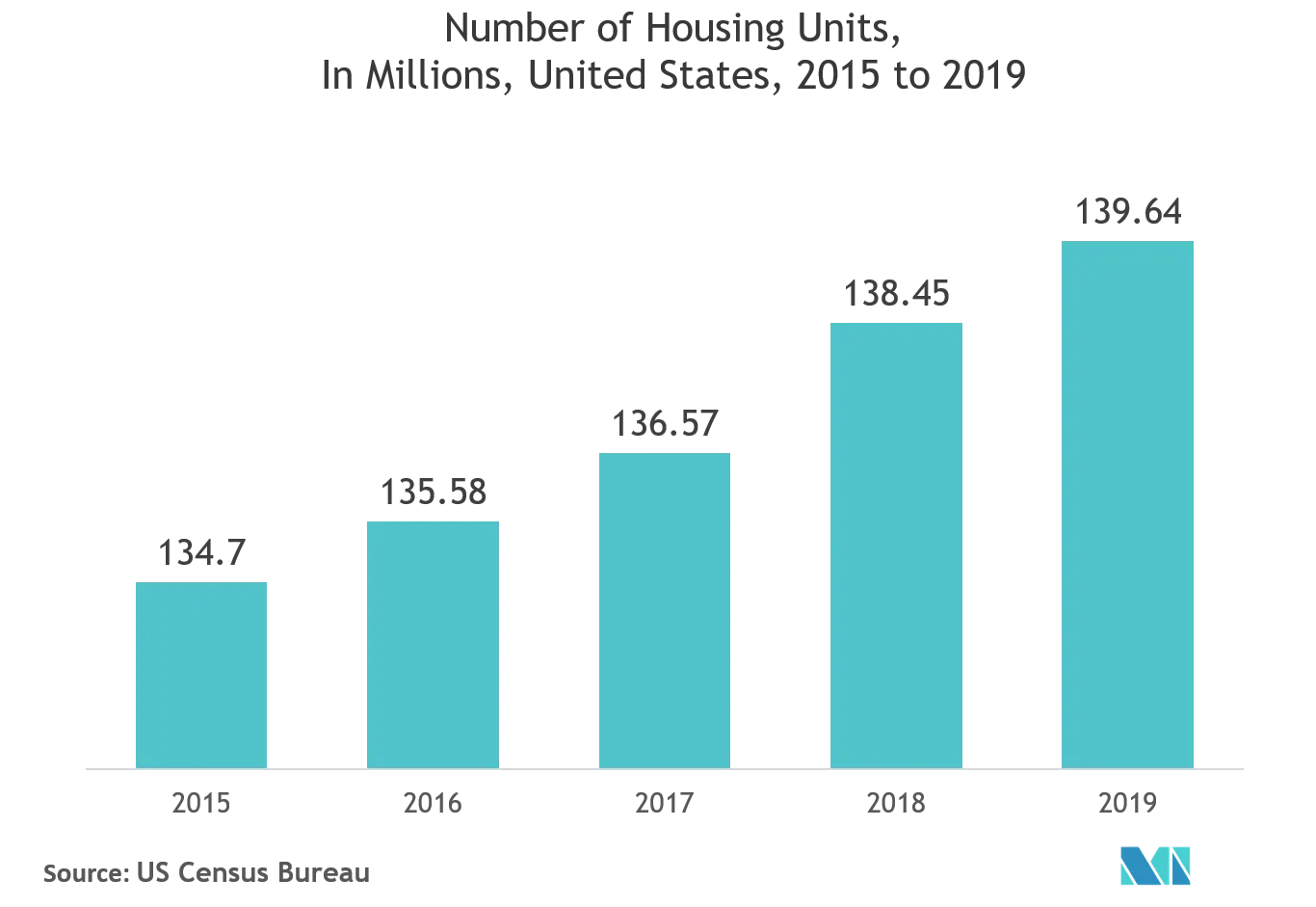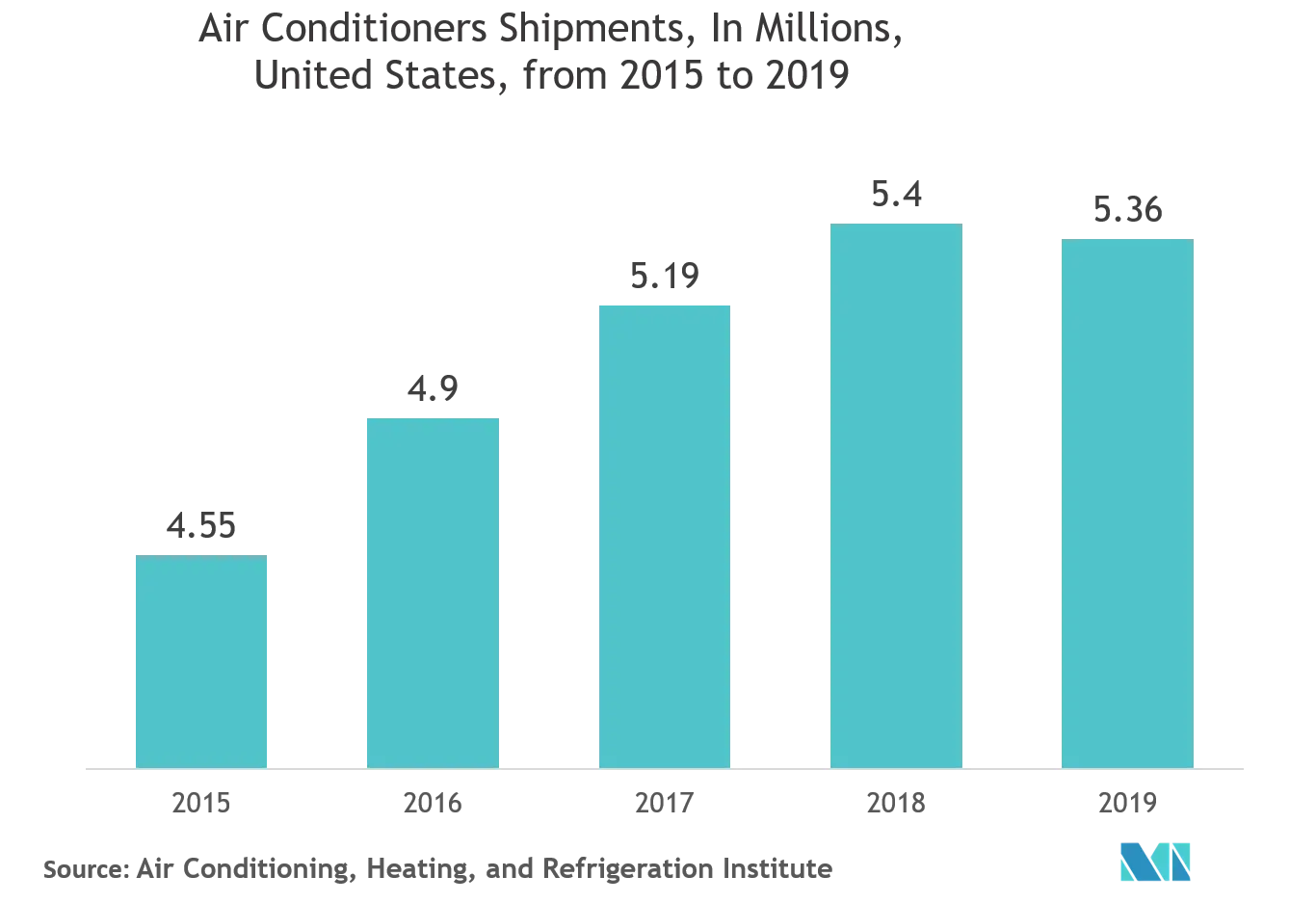Market Trends of North America Occupancy Sensors Industry
This section covers the major market trends shaping the North America Occupancy Sensors Market according to our research experts:
Residential Segment is Expected to Witness Significant Growth
- Following a period of stagnation over the duration of 2010-2016, the number of owner-occupied housing units in the United States has recently started growing again, increasing to 80.68 million in 2019.(US Department of Housing and Urban Development Estimates). This is because the house prices have been rising faster than the cost of rent, meaning that it is increasingly more affordable to own a house than to rent. Hence the owners are keen to adopt smart lighting solutions to save on energy costs.
- According to the U.S. Energy Information Administration (EIA), residential sector electricity consumption for lighting was about 75 billion kWh or about 5% of total residential sector electricity consumption in 2019.
- Smart Home adoption is also on the rise in the US. In a survey conducted online in Q4 2019 of 5,000 people across the US, by SmartEnergy IP, a division of SmartMark Communications, it was concluded that the “cool factor” was a major driver surrounding smart home investments, with nearly 37% of respondents citing it as a reason for their interest in smart home devices. These statistics suggests a transition in original thinking and marketing of smart home products. The survey also included questions around product preferences, with smart thermostats, smart security and smart lighting, gathering most votes.
- Partnerships and entry by global players into the North America market are also expected to shape the market landscape in future. Recently, Austria-based Loxone entered the US market in February 2019 with their smart home automation control offering that features more than 150 SKUs of products, including occupancy sensors, as well as temperature and humidity sensors.

HVAC Segment is Expected to Witness Significant Growth
- The demand for air conditioning in the commercial industry is growing in the country. In February 2019, Comfort Systems USA – a prominent provider of mechanical services, including heating, ventilation, air conditioning (HVAC), plumbing, piping, and controls – announced that it has entered into a definitive agreement to acquire Walker TX Holding Company Inc. and its related subsidiaries headquartered in Texas. In addition, government regulations about energy efficiency and the use of environment-friendly refrigerants are expected to create opportunities for the market over the forecast period.
- The region is focusing on smart city development to improve energy efficiency. The city of Newark, New Jersey has onboarded Honeywell install energy-efficient control solutions that incorporate the city’s HVAC, like room occupancy sensors, and multi-location control of building systems. This is a part of the city’s Sustainability Action Plan. Initiatives such as these are expected to deliver significant savings in energy operations and hence drive exponential market demand.
- Moreover, according to a forecast from the American Institute of Architect, construction spending was expected to grow through 2019. Based on short-term projections, the US non-residential construction market is anticipated to grow to 2.4% in 2020, compared to the previous year. According to the US Census Bureau, the value of construction starts in the United States is estimated to reach USD 135 billion in 2022. At the beginning of 2019, private offices were the most common types of commercial construction to start in the country.
- Many vendors are introducing advanced products for commercial applications. For instance, in June 2019, Mitsubishi Electric Trane HVAC US (METUS) announced the launch of its line of MSZ/MUZ-WR Model 16 Seasonal Energy Efficiency Ratio (SEER) heat pumps. These new heat pumps are part of the M-Series product line, including outdoor units, indoor units, and controller options for light commercial applications. With rated capacities of 9, 12, 18, and 24 kBtu/h, the 4 WR Model heat pumps’ efficiencies can reach up to 16 SEER.
- Additionally, at the 2019 AHR Expo in Atlanta, Samsung HVAC North America announced that it would expand its commercial air conditioning business in the region by building, training, and supporting a network of specifying representatives, distributors, and installers. The company also announced it is expanding its Wind-free advanced cooling models for light commercial solutions. The surge in the demand of HVACs is expected to drive the growth of occupancy sensors in the region.

